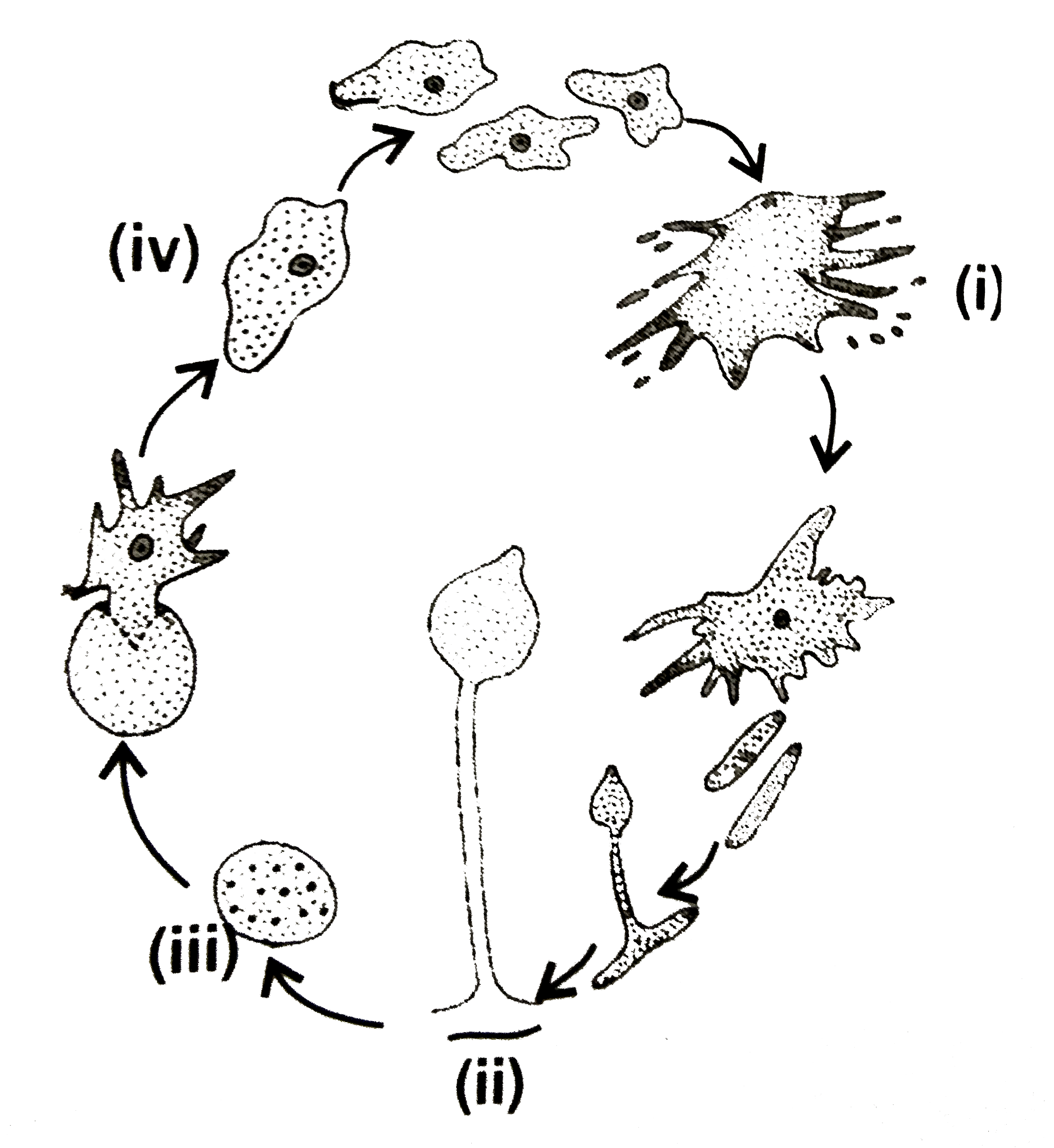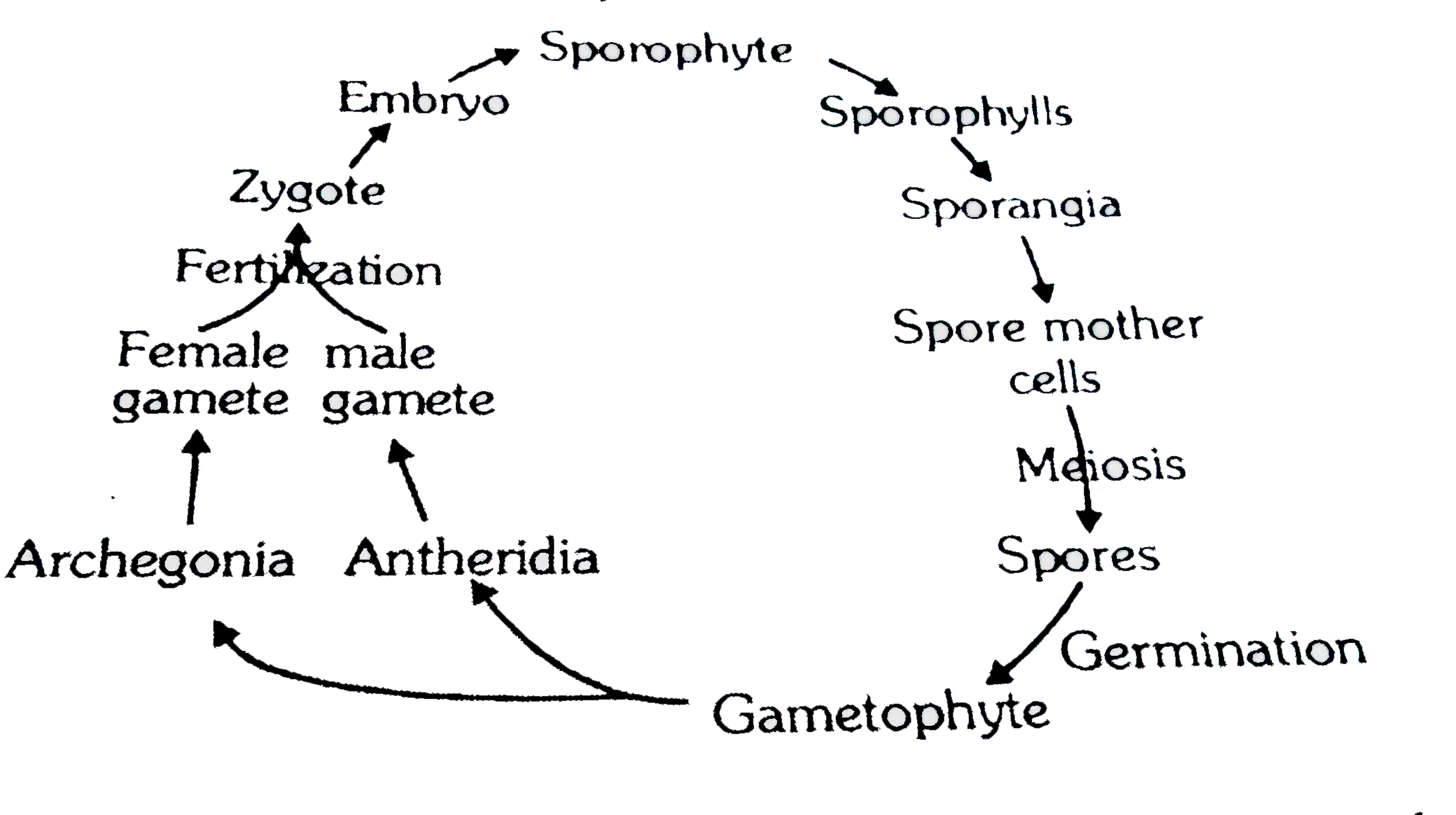In life cycle of non-vascular terrestrial plants of moist habitats, the gametophytic structures are
Androcytes, motile female gamete, neck canal cells
Venter canal cell, oosphere, rhizoids
Gemmae, protonema, capsule
Archegonial branch, antherozoids, elaters
To solve the question regarding the gametophytic structures in the life cycle of non-vascular terrestrial plants of moist habitats, we will follow these steps:
Step 1: Identify the Type of Plants
- Non-vascular terrestrial plants that thrive in moist habitats are primarily bryophytes. These plants include mosses, liverworts, and hornworts.
Hint: Remember that bryophytes are often referred to as "amphibians of the plant kingdom" because they require both land and water for their life processes.
Step 2: Understand the Life Cycle of Bryophytes
- The life cycle of bryophytes is characterized by an alternation of generations, where the gametophyte is the dominant stage. This means that the main plant body is haploid and produces gametes.
Hint: Focus on the distinction between gametophyte (haploid) and sporophyte (diploid) stages in the life cycle.
Step 3: Identify Gametophytic Structures
- In bryophytes, the gametophytic structures include:
- Antheridia: The male reproductive organs that produce sperm (antherozoids).
- Archegonia: The female reproductive organs that produce eggs.
- Neck canal cells: Cells within the archegonium that help facilitate fertilization.
- Rhizoids: Root-like structures that anchor the gametophyte but are not involved in reproduction.
Hint: Remember that all structures associated with the gametophyte are haploid.
Step 4: Differentiate Between Gametophytic and Sporophytic Structures
- The sporophyte generation arises from the fertilization of gametes and includes structures like:
- Capsule: Contains spore mother cells that undergo meiosis to produce haploid spores.
- Seta: The stalk that supports the capsule.
- Foot: The part that connects the sporophyte to the gametophyte.
Hint: Identify which structures are haploid (gametophyte) and which are diploid (sporophyte).
Step 5: Conclusion
- The gametophytic structures in non-vascular terrestrial plants of moist habitats (bryophytes) are primarily the antheridia, archegonia, neck canal cells, and rhizoids. These structures are all haploid and are essential for the reproduction of bryophytes.
Final Answer: The gametophytic structures are antheridia, archegonia, neck canal cells, and rhizoids.
- Non-vascular terrestrial plants that thrive in moist habitats are primarily bryophytes. These plants include mosses, liverworts, and hornworts.
- The life cycle of bryophytes is characterized by an alternation of generations, where the gametophyte is the dominant stage. This means that the main plant body is haploid and produces gametes.
- In bryophytes, the gametophytic structures include:
- Antheridia: The male reproductive organs that produce sperm (antherozoids).
- Archegonia: The female reproductive organs that produce eggs.
- Neck canal cells: Cells within the archegonium that help facilitate fertilization.
- Rhizoids: Root-like structures that anchor the gametophyte but are not involved in reproduction.
- The sporophyte generation arises from the fertilization of gametes and includes structures like:
- Capsule: Contains spore mother cells that undergo meiosis to produce haploid spores.
- Seta: The stalk that supports the capsule.
- Foot: The part that connects the sporophyte to the gametophyte.
- The gametophytic structures in non-vascular terrestrial plants of moist habitats (bryophytes) are primarily the antheridia, archegonia, neck canal cells, and rhizoids. These structures are all haploid and are essential for the reproduction of bryophytes.
Topper's Solved these Questions
Similar Questions
Knowledge Check
Study the given life cycle of cellular slime moulds and select the incorrect option.
 P. Structure (i) is formed in response to drought conditions and exhaution of food supply.
P. Structure (i) is formed in response to drought conditions and exhaution of food supply.
Q. Structure (ii) represents myxamoeba, which rounds off and is converted to a spore.
R. (iii) are uninucleate, haploid sturctures without any cell wall.
S. (iv) are uninucleate, haploid structures possessing a conspicuous xwll qLL.AP and QBR and SCP,Q and SDQ,R and S
Non-Vascular cryptogamous plants are:-
View SolutionEvolutionarily the first terrestrial plants to possess vascular tissues are
View SolutionNon vascular land plants are called :-
View SolutionName the first terrestrial plants which possess vascular tissues tissues
View SolutionStudy the following life cycle of Pteridophytes:-

How many structure represent gametophytic & sporophytic generations, respectively?
View SolutionThe predominant stage of the life cycle of a moss is the gametophyte which consists of
View SolutionThe megasporophyll of vascular plants is analogous to which structure in angiosperms
View Solution
